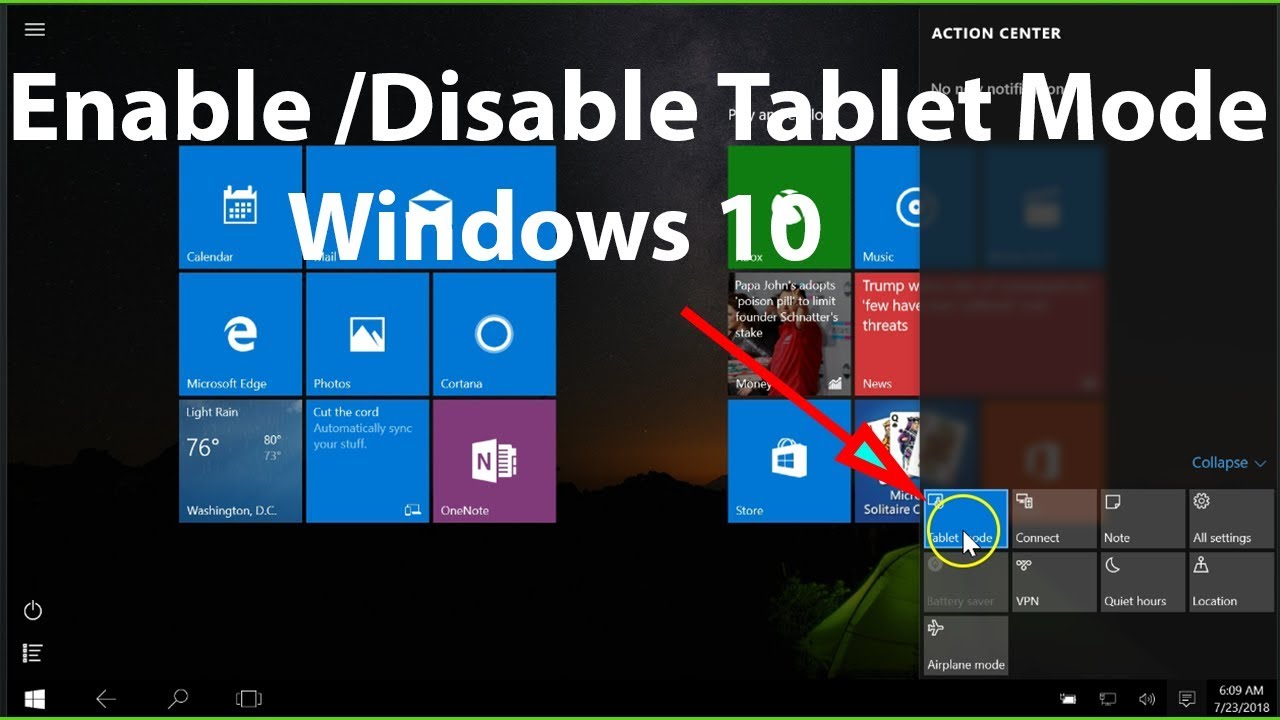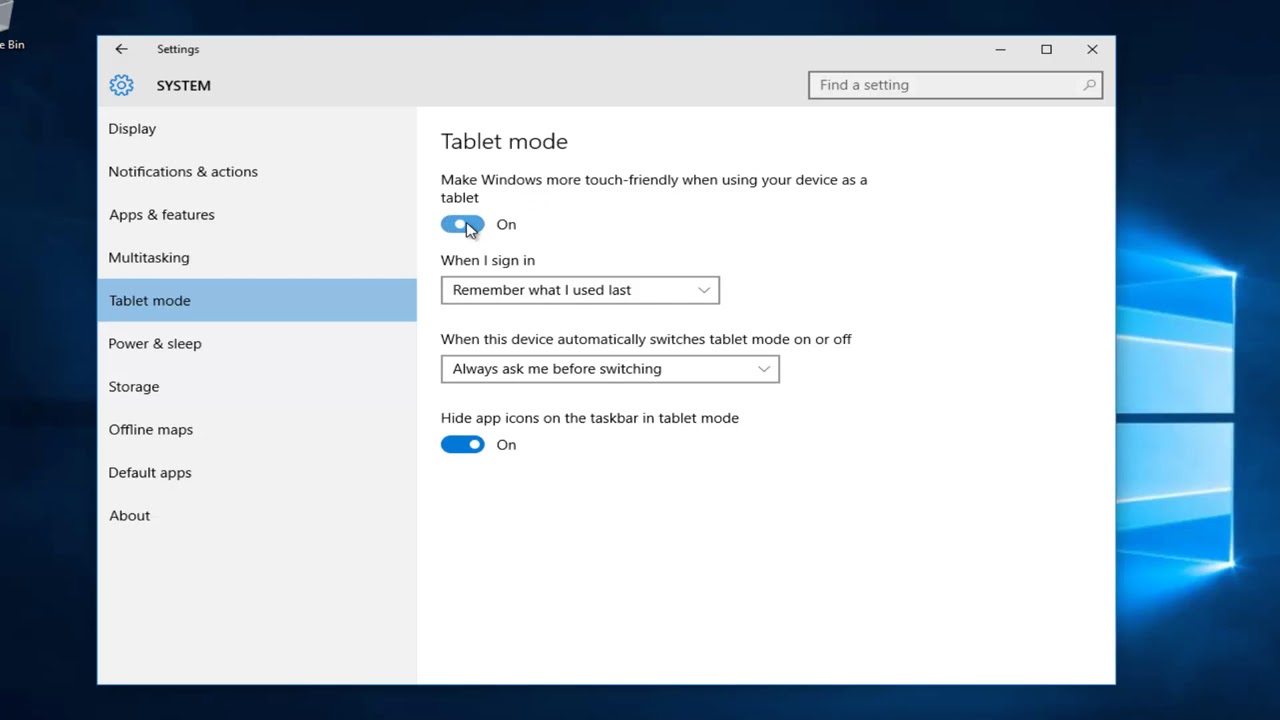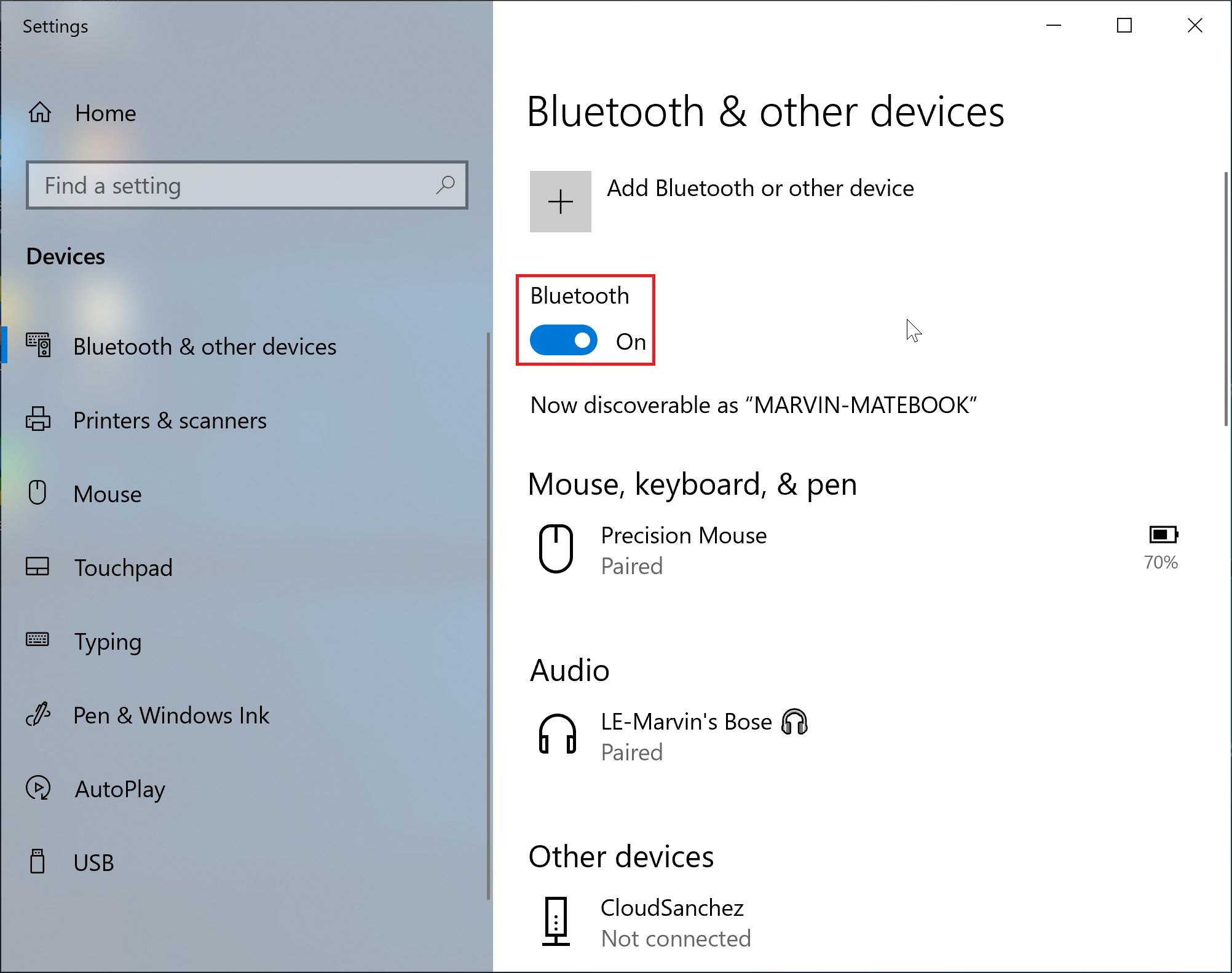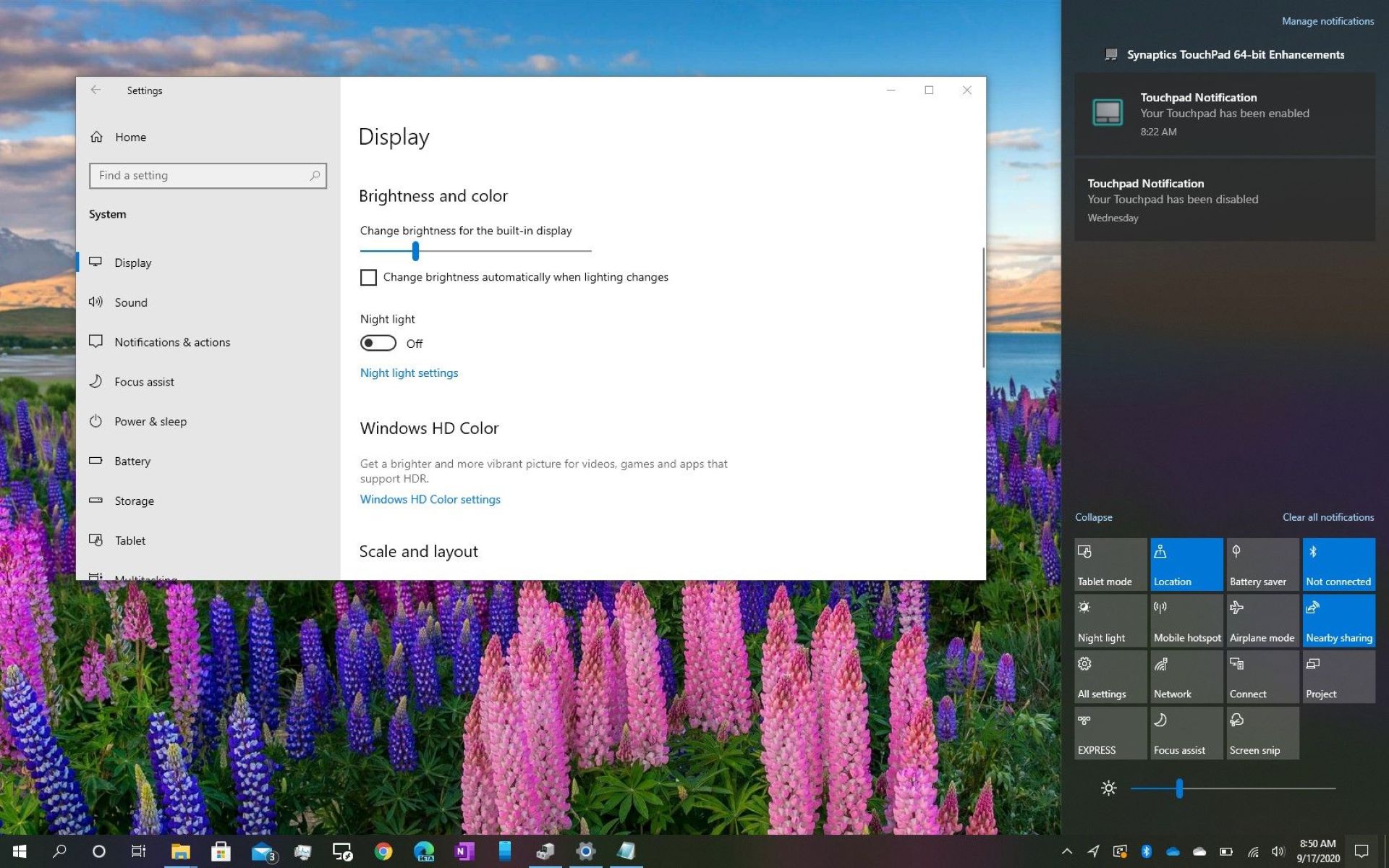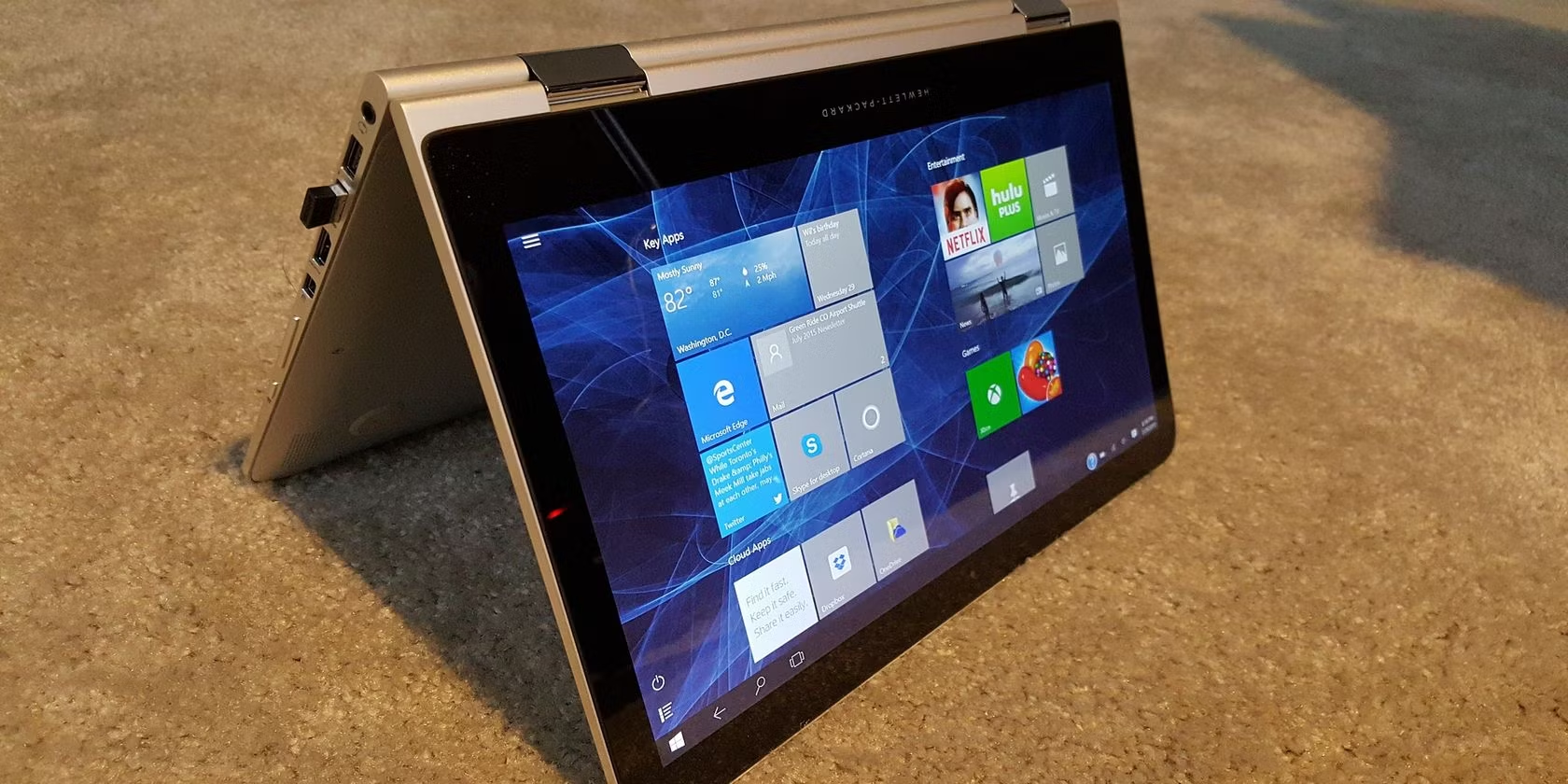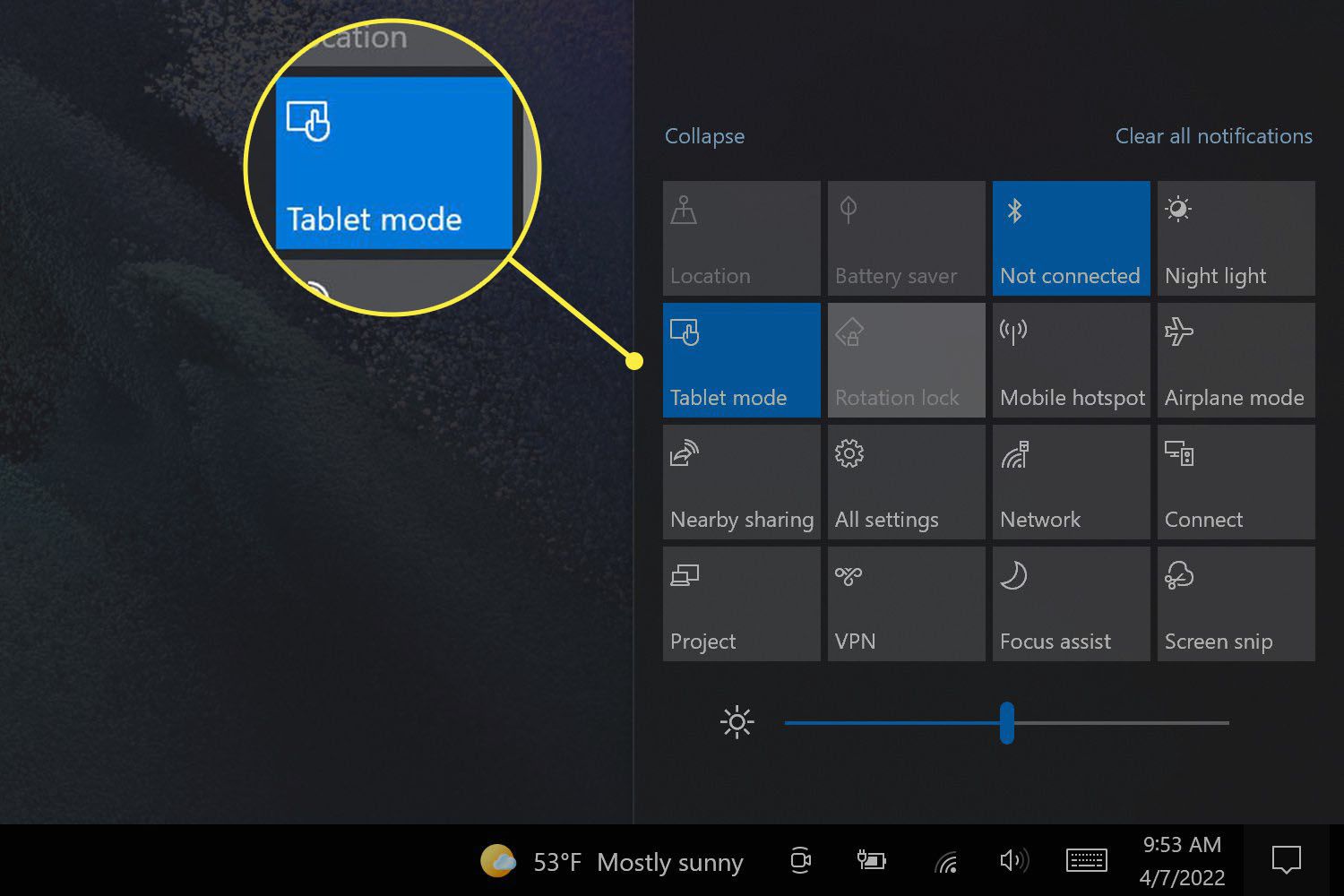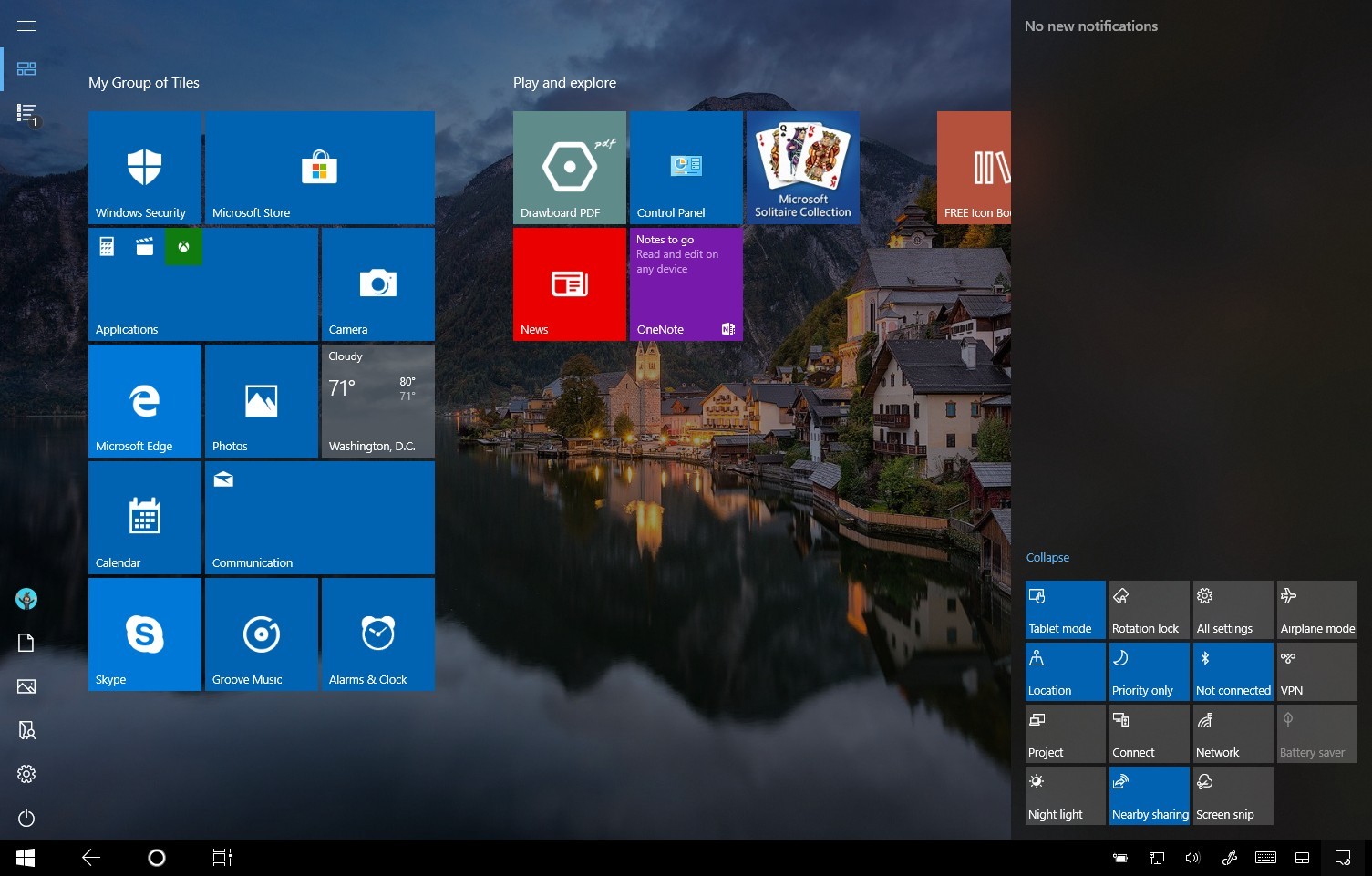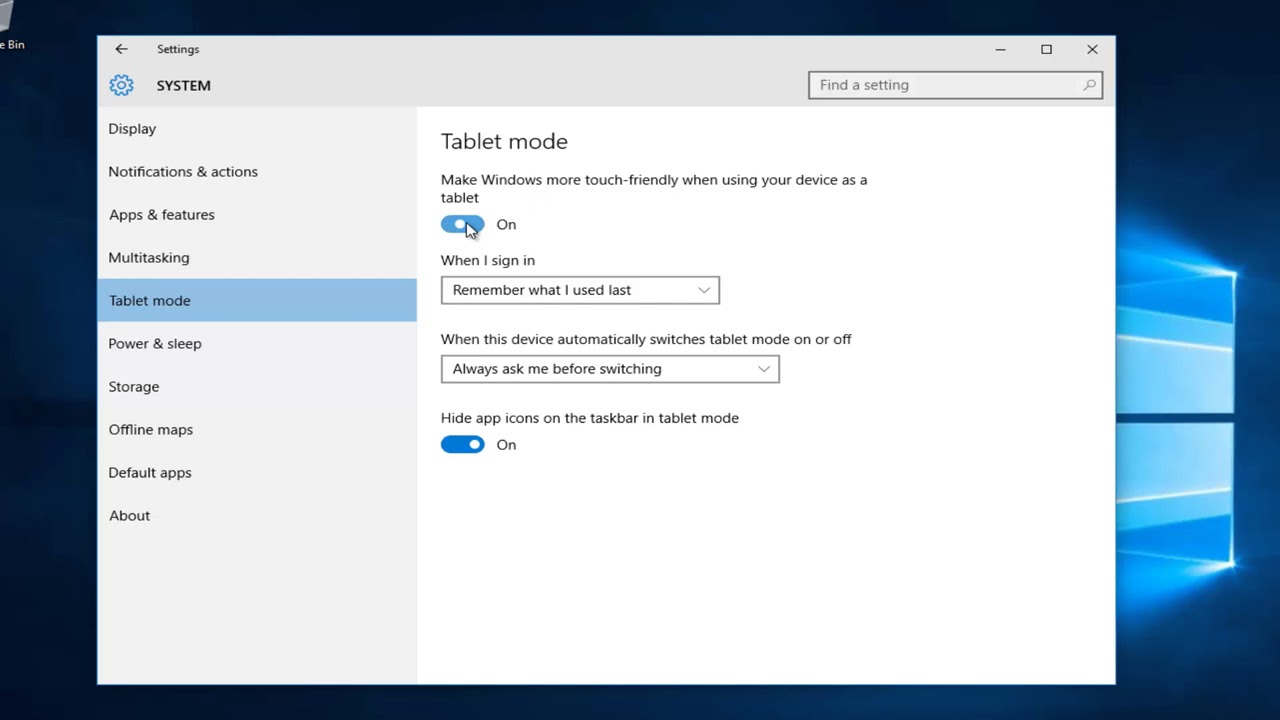Introduction
Welcome to the world of Windows 10, a powerful operating system that offers a plethora of features designed to enhance your productivity and streamline your digital experience. Among its many functions is the Action Center – a centralized hub for managing notifications and accessing important settings.
The Action Center is an essential component of Windows 10, providing quick and convenient access to system notifications, alerts, and settings all in one place. Whether you want to stay updated on your emails, check for software updates, or modify your display settings, the Action Center is your go-to destination.
In this article, we will guide you through the ins and outs of the Action Center, exploring its features, functionalities, and how you can customize it to suit your needs. Whether you’re a seasoned Windows user or new to the Windows 10 ecosystem, this guide aims to help you navigate and make the most of the Action Center.
So, let’s dive in and discover where you can find the Action Center on Windows 10 and what it has to offer!
What is the Action Center?
The Action Center is a centralized notification center on Windows 10 that provides a convenient way to stay informed about various activities and events happening on your device. It acts as a hub for all your notifications, alerts, and quick settings, ensuring you never miss an important update.
When you receive a new email, a message from a chat application, or a calendar reminder, it will be displayed in the Action Center, allowing you to view and take action on these notifications without interrupting your current tasks.
Besides notifications, the Action Center also provides access to essential system functions and settings. You can toggle features like Wi-Fi, Bluetooth, and airplane mode, adjust screen brightness, and switch between different power modes with just a few clicks.
The Action Center is designed to be intuitive and user-friendly, with a visually pleasing interface that displays notifications in a chronological order. When you receive a new notification, it appears at the top of the list, and older notifications gradually move down. This ensures that you can easily scan through your notifications and prioritize them based on their relevance.
Furthermore, the Action Center allows you to customize your notification preferences, deciding which apps can send you notifications and how they are displayed. You have the flexibility to choose whether you want banners, which briefly appear at the top-right corner of your screen, or actionable alerts, which provide additional options for interacting with the notification.
Overall, the Action Center is a crucial component of Windows 10, providing a centralized and efficient way to manage notifications and access frequently used settings. It helps you stay focused, organized, and in control of your digital experience, ensuring that you never miss important information or updates.
How to open the Action Center
Opening the Action Center in Windows 10 is a breeze, and there are several different methods you can use to access it. Here are three simple ways to open the Action Center:
1. Using the Taskbar: The easiest and most common way to open the Action Center is by clicking on the Action Center icon located on the right side of the taskbar. It looks like a speech bubble with a comment symbol. Simply click on the icon, and the Action Center will slide out from the right side of the screen.
2. Using the Windows key: Another quick way to open the Action Center is by using the Windows key on your keyboard. Press the Windows key (located between the Ctrl and Alt keys) or the Windows logo key on your device, and the Action Center will open. This method can be particularly useful if you have multiple windows open and want to access the Action Center without switching focus.
3. Using the Action Center shortcut: If you prefer using keyboard shortcuts, you can press the Windows key + A to directly open the Action Center. This shortcut works regardless of your current application or window, making it a convenient way to access the Action Center without any distractions.
Once you have successfully opened the Action Center, you can explore the various notifications, quick settings, and other features it offers. Take some time to familiarize yourself with its interface and functionalities to make the most out of this powerful tool.
Now that you know how to open the Action Center, let’s move on to the next section to learn how to navigate its interface and make it suit your preferences.
Navigating the Action Center interface
Once you have opened the Action Center in Windows 10, you will be greeted with a clean and easy-to-navigate interface. Let’s take a closer look at how to navigate the different elements of the Action Center:
1. Notification panel: The main section of the Action Center is the notification panel, where all your recent notifications are displayed. You can scroll through the list of notifications to view them, and clicking on a notification will take you directly to the relevant app or action.
2. Quick actions: Located at the bottom of the notification panel, you will find the quick actions section. This area provides shortcuts to commonly used settings, such as Wi-Fi, Bluetooth, and screen brightness. You can click on the icons to directly toggle these settings on or off.
3. Expandable notifications: Some notifications in the Action Center are expandable, meaning they provide additional options and information when clicked on. Look out for notifications with a small arrow icon next to them. Clicking on the arrow will expand the notification and reveal more details or actions you can take.
4. Clearing notifications: To clear a specific notification from the Action Center, you can click on the “X” button that appears when you hover over it. This will remove the notification from the list. If you want to clear all notifications at once, you can click on the “Clear all” button located at the top-right corner of the notification panel.
5. Customizing the Action Center: Windows 10 allows you to personalize the Action Center according to your preferences. To access the customization options, click on the “Manage notifications” link at the bottom of the notification panel. Here, you can choose which apps can send you notifications, control the priority of notifications, and modify other notification settings.
By navigating through these different elements of the Action Center, you can effortlessly manage your notifications, access quick settings, and stay on top of your digital activities.
Now that you know how to navigate the Action Center interface, let’s move on to the next section to learn how to customize the Action Center to suit your needs.
Customizing the Action Center
The Action Center in Windows 10 offers flexibility when it comes to customization, allowing you to tailor it to your preferences. Here are some ways to customize the Action Center:
1. Managing quick actions: The quick actions section of the Action Center provides shortcuts to commonly used settings. To customize the quick actions, simply click on the “Expand” link at the bottom of the notification panel. This will reveal additional quick actions that you can add or remove. To add a new quick action, click on the “+” button next to it. To remove a quick action, click on the “X” button.
2. Adjusting notification settings: To customize how notifications appear in the Action Center, click on the “Manage notifications” link at the bottom of the notification panel. Here, you can choose which apps are allowed to send you notifications and adjust their priority level. You can also control whether notifications show as banners or actionable alerts, and configure other notification preferences.
3. Changing Action Center behavior: To modify how the Action Center behaves, go to the Windows Settings app by clicking on the Start menu and selecting the “Settings” gear icon. From there, navigate to “System” and then “Notifications & actions.” Here, you can customize various aspects of the Action Center, such as showing or hiding notifications on the lock screen, disabling tips and tricks, and choosing the number of notifications visible in the Action Center.
4. Organizing notifications: The Action Center allows you to control how notifications are organized. Click on the “Expand” link at the bottom of the notification panel, and then click on “Sort by” to choose how notifications are sorted, whether by most recent or group by app. This can help you quickly locate and prioritize notifications.
5. Customizing individual app notifications: If you want to customize notifications for specific apps, you can do so by going to the Windows Settings app and selecting “System” and then “Notifications & actions.” Scroll down to find the list of apps under “Get notifications from these senders” and click on the app you want to customize. Here, you can enable or disable notifications for that app, adjust the sound, and choose whether the notification appears as a banner or in the Action Center.
By customizing the Action Center, you can personalize it to align with your workflow and preferences. Take the time to explore these options and make the Action Center work best for you.
Now that you know how to customize the Action Center, let’s move on to the next section to learn how to manage notifications within the Action Center.
Managing notifications in the Action Center
The Action Center in Windows 10 provides a centralized location for managing and interacting with notifications from various apps and system activities. Here’s how you can effectively manage notifications within the Action Center:
1. Viewing notifications: When you receive a new notification, it appears at the top of the notification panel in the Action Center. Simply click on the notification to expand it and view its contents, which may include text, images, or even interactive buttons.
2. Taking action on notifications: Many notifications in the Action Center include actionable buttons that allow you to respond or take action directly from the notification itself. For example, an email notification may include options to reply or delete the message without opening your email client. Utilize these quick actions to save time and streamline your workflow.
3. Clearing notifications: To clear notifications from the Action Center, you have a few options. To clear individual notifications, hover over the notification and click on the “X” button that appears. To clear all notifications at once, click on the “Clear all” button located at the top-right corner of the notification panel. This ensures that your Action Center remains clutter-free and only contains relevant and recent notifications.
4. Managing app-specific notification settings: Windows 10 allows you to fine-tune notification settings for individual apps. To access these settings, open the Windows Settings app, navigate to “System,” and then select “Notifications & actions.” From there, you can choose an app from the list and customize its notification preferences, such as enabling or disabling notifications, altering the notification sound, or choosing the notification style.
5. Prioritizing notifications: The Action Center allows you to control the order in which notifications are displayed. Click on the “Expand” link at the bottom of the notification panel, and then click on “Sort by” to choose between sorting by most recent or grouping notifications by app. This customization option can help you prioritize the most important notifications and easily locate specific ones.
By effectively managing notifications within the Action Center, you can stay organized, respond promptly to important events, and ensure that your digital experience is optimized for productivity and efficiency.
Now that you know how to manage notifications in the Action Center, let’s move on to the next section to address common issues that you may encounter with the Action Center.
Troubleshooting common Action Center issues
While the Action Center in Windows 10 is designed to work seamlessly, you may encounter some common issues that can hinder its functionality. Here are a few troubleshooting steps to address these issues:
1. Notifications not appearing: If you’re not receiving any notifications in the Action Center, the first thing to check is if notifications are enabled for the respective apps. Open the Windows Settings app, navigate to “System,” and select “Notifications & actions.” Make sure the “Get notifications from apps and other senders” toggle is turned on. Also, check the individual app settings to ensure that notifications are enabled for specific apps.
2. Action Center not opening: If you’re having difficulty opening the Action Center, try restarting your computer. This can sometimes fix temporary glitches. Additionally, make sure there are no pending Windows updates, as installing the latest updates can resolve compatibility issues and improve the performance of the Action Center.
3. Notifications disappearing too quickly: If notifications are appearing in the Action Center but disappearing too quickly, open the Windows Settings app, navigate to “System,” and select “Notifications & actions.” Scroll down and click on “Focus assist settings.” From there, you can adjust the behavior of notifications during different focus states, such as when you’re presenting or playing games. Customize the settings according to your preferences to ensure that notifications stay visible for the desired duration.
4. Action Center icon missing from the taskbar: If you can’t locate the Action Center icon on your taskbar, right-click on the taskbar and select “Taskbar settings.” Scroll down and click on “Turn system icons on or off.” Toggle the switch next to “Action Center” to ensure that the icon is visible in the taskbar.
5. Action Center not syncing between devices: If you’re using multiple devices with the same Microsoft account and want to sync notifications between them, open the Windows Settings app, navigate to “System,” and select “Notifications & actions.” Enable the “Show notifications on all devices” option. This will ensure that notifications received on one device are also visible on other devices.
If the above troubleshooting steps don’t resolve the issues with the Action Center, it might be helpful to consult the Microsoft Support website or reach out to their support team for further assistance. They have a wealth of resources and expertise to help you overcome any persistent issues.
Now that you’re equipped with troubleshooting techniques for the Action Center, you can ensure its smooth functioning and make the most of this essential feature in Windows 10.
Conclusion
The Action Center on Windows 10 is an indispensable tool for managing notifications and accessing important settings. With its centralized and intuitive interface, it allows you to stay informed and in control of your digital experience. Whether you’re a busy professional or a casual user, the Action Center offers convenience and efficiency in managing your notifications.
In this article, we explored the various aspects of the Action Center, from understanding what it is and how to open it, to navigating its interface, customizing its settings, and troubleshooting common issues. By following the provided steps, you can optimize the Action Center to suit your preferences and streamline your workflow.
Remember to regularly check the Action Center for new notifications and take advantage of its quick actions to promptly respond to important events. Whether it’s replying to an email, adjusting your device’s settings, or interacting with app-specific notifications, the Action Center allows you to stay organized and focused on your tasks.
If you encounter any issues with the Action Center, don’t worry. The troubleshooting steps provided in this article can help you address common problems and ensure that the Action Center functions smoothly.
Now that you have a better understanding of the Action Center, go ahead and explore its features, customize it to your liking, and make it a valuable tool in your Windows 10 experience. Stay productive, stay informed, and make the most of the powerful capabilities that the Action Center has to offer.









